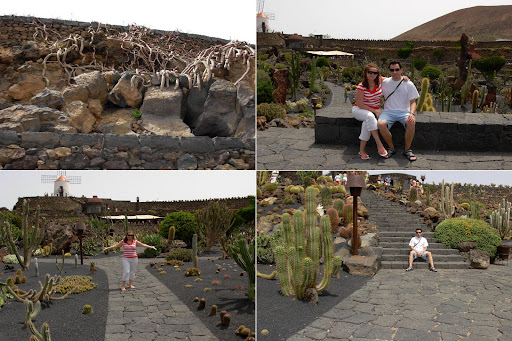The gardens of low water consumption do not have to be made only by semi-arid climate plants. Not cactus gardens or gardens with lawns. Nor should we use only native species.
In Xerojardinería choose species adapted to local climate. Are indigenous, but again not the only ones. There are other ornamental plants, which although not native, are resistant to drought. Avoid plant species generally avid water.

The advantages of using native species that are generally more resistant to everything (drought, soil, climate, pests and diseases are best suited ,...), and therefore the maintenance is reduced.
There are a variety of native species very broad covering all the needs of shapes, textures, sizes, colors, climate and soil. The downside is that sometimes in the garden centers and nurseries do not have many of them simply because they bring the most typical and trade. We must make our interest to see them or to place bids. In all countries there asilvestradas and native plant species that have not yet been used and possess excellent aesthetic qualities and practices.

If you have little water to irrigate, you need to rather than just the most resistant of all, who can viver virtually no irrigation, and other such gross Cactus.
2. Grass
• The grass is the main consumer of water gardens. It takes 70% of the water that brings the water to a conventional garden.
• The grass is not essential. You can do nothing without a beautiful garden or lawn with a little, perhaps the central area around the pool areas and more.
• The Xerojardinería also adopts the use of grass, but efficiently. There are other alternatives to cover the ground as we shall see later.
For a minimum expenditure of water follow these tips:
• for a small surface to grass, so essential to family needs.
• The simple design of grass is easier to water (circle, square).
• Plant grass on the edges of the low water plants.
• Avoid or implanted in marginal areas with steep slopes (slopes), better put on those sites tapizantes plants.
• Choose a grass that is resistant to drought. Mixtures are specially designed for this.

The species of grasses are more resistant:
* Cynodon dactylon (Bermuda)
* Pennisetum clandestinum (Kikuyu)
* Stenotaphrum secundatum (Gramona, St. Augustine)
* Zoysia japonica (Zoysia)
* Paspalum notatum (Bahia Grass)
These are all warm and frost causes leaves to brown, but not die, the roots are still alive, and when the spring regrowth. Therefore, in climates with frost seeding should not be any 5 of these species if you do not have a lawn unsightly brown color during the autumn-winter.* Pennisetum clandestinum (Kikuyu)
* Stenotaphrum secundatum (Gramona, St. Augustine)
* Zoysia japonica (Zoysia)
* Paspalum notatum (Bahia Grass)
In cool climates the most resistant to the lack of water are Festuca arundinacea and Festuca ovina and should dominate the mix.
• Do not water so often in order to stimulate root growth in depth. If you have plenty of moisture on the surface what is going to look down?. Used to the grass for a little water over its roots deeper.
• Mowing the lawn, leaving more height. The mowing will also promote its high hardness and better resistance to pests, fungi and drought that develops deeper roots: leaves longer, longer roots. No cuts in the summer as satin, let the grass grow higher as temperatures rise.

0 komentar:
Posting Komentar